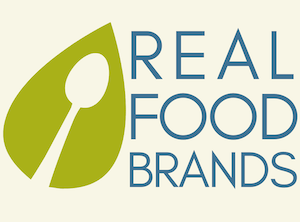If you want to understand brand positioning, think of Kia, Volvo, and Tesla. Sure, all three are car companies but they’re each very different brands with their own unique, loyal audience, product benefits, and customer experience. All of these factors combined for each brand create a very different offer for each and attract different groups of people as loyal fans of their brand.
Today on Episode 104 of the Real Food Brands Marketing Podcast, host and Food Brand Strategist Katie Mleziva goes into detail about how to write a brand positioning statement and how to know if yours is strong enough to make your brand stand out.
An Intro to Brand Positioning Statements
While everything Katie talks about is ultimately leading to brand positioning, there is a specific brand positioning statement you can use to refine your strategic thinking. This is a more advanced concept, but Katie shares it because brand positioning is traditionally something that only big brands with big budgets have had access to, and as part of shaking up shopping carts and helping more people get access to real food, she’s working to change that. As a smaller brand, if you understand the underlying principles you can use this powerful tool to help your food, beverage, or farm business stand out.
To get started, you need to write a brand positioning statement. We get more in-depth in Brand Strategy Streamlined program and Katie’s Brand Strategy Jumpstart 1:1 work, but in this episode Katie takes you through some simple exercises to get you thinking. One thing to remember: this is for INTERNAL USE. While it influences a lot of consumer-facing things like copy, product design, marketing plans, etc., it’s not something you’d want to use as a message by itself because as you’ll see, the formula is not meant for copywriting, it’s meant for driving clarity around the strategic vision.
The Formula for a Brand Positioning Statement
So, fill in the blanks:
<Brand Name> is the <frame of reference/category> that helps <ideal consumers> to <point of difference/benefit> because <reason to believe>.
Frame of reference: Who is your competition? For example, are you positioning your brand against others in your specific category like cookies or broader, like all baked goods, or even broader, all snack foods? Broader categories can lead to more upside but it can be harder to stand out.
Ideal Consumer: Several episodes cover this, which we’ll link below. What you want is something that summarizes who you are trying to reach in just a few words to capture the essence of the ideal consumer you’re working to attract.
Point of Difference/Benefit: Here you need to choose the most important thing that will really differentiate your brand. What is the one thing you want everyone to know about your brand and why does that matter?
Reason to Believe: How do you prove that what you just told them about your point of difference is true? Some examples would be specifics about your ingredients, your sourcing, how you make your product, or even some sort of research data. Think of the old “9 out of 10 dentists recommend” type of statement.
Be sure to listen to the full episode for more, as Katie breaks down some cracker brands to explain how different their brand positioning really is, even in the same category. We also go through what to look for to make sure you’re writing a strong, persuasive brand positioning statement by making sure it’s clear, relevant, ownable, focused, and inspiring.
If you want to get more in-depth on these topics to build your food business brand, the Brand Strategy Streamlined™ program is a good place to start because you can go at your own pace. And Katie still works with a few 1:1 clients each month for those of you looking for additional guidance and accountability.
You can contact Katie here to email a question, or to set up a free 30-minute call if you are interested in talking through ways she can help you set your brand apart through brand positioning and brand story.
Now, let’s go shake up shopping carts!
Quotes:
“Brand positioning is really woven into all the content I share and the work I do, because ultimately we are looking at how we’re can position your food business or farm brand to stand out to meet your consumers’ needs in a way your competitors can’t, or won’t.” – Katie Mleziva
“Strategy is about making tough choices – and if you have a team sometimes about having tough conversations to really get to the heart of what you want your brand to stand for and how it will come to life.” – Katie Mleziva
In This Episode:
- How Kia, Volvo, and Tesla can help you understand brand positioning.
- Why brand positioning is a key component for everything that you do in your business.
- The formula for writing a brand positioning statement.
- Why you need to be clear about your ideal consumer and your category.
- How to identify your point of difference.
- What makes for a strong brand positioning statement.
Resources:
- Ep #58: Getting to Know Your Consumers as Real People with Britta Schell
- Ep #65: [Brand Strategy Series] Setting Your Food Business Apart Step 2: Identifying Your Ideal Consumer
- Blog post: How to Identify Your Ideal Audience
- The Real Food Brands Marketing Round Table
- Brand Strategy Streamlined Course Details
- Download Your Free Brand Strategy Checkup
- Book a 60-minute 1-on-1 Brand Strategy session with Katie
- Connect with Katie on Instagram


